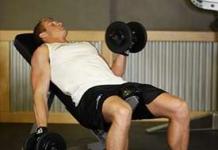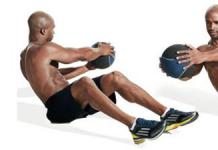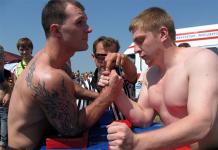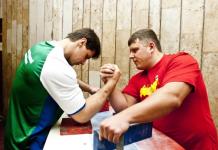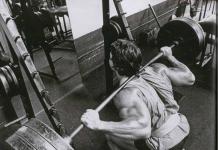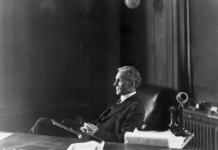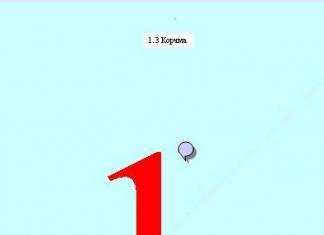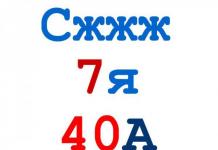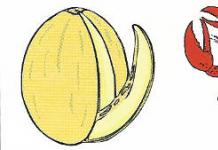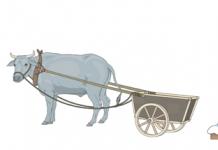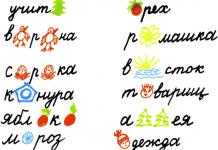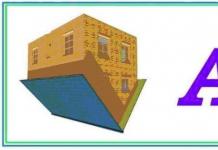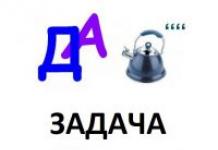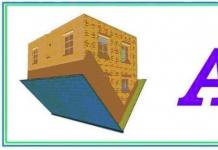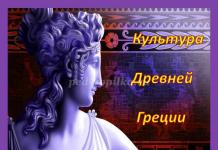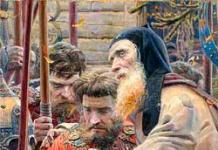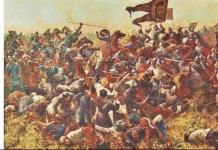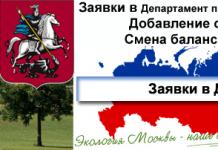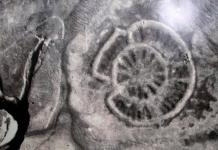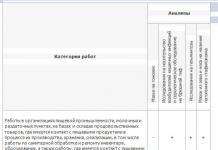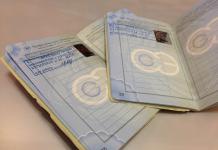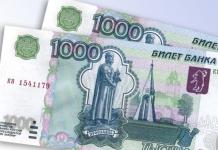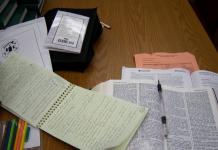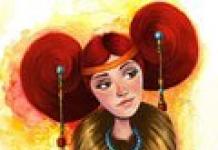Class layout:
1. Portraits of scientists mathematicians.
2. Wise thoughts:
"The greatness of a man is in his ability to think."
B. Pascal."Mathematics is the language that all exact sciences speak."
N.I. Lobachevsky.
3. Golden words:
- Science and labor give marvelous shoots.
- The more you learn, the stronger you become.
- If you read books, you will know everything.
Opening.
Let someone like English
Who cares about chemistry
Without mathematics, all of us
But neither here nor there
We get equations like poems
And the sinuses keep the spirit alive
We have cosines, like songs,
And the reduction formulas
They caress the ear.
The students of the class were divided into two teams (boys and girls), places in the class were prepared for the teams, the participants sit around their table - this is the workplace of each team.
Warm up:
Question 1:
She speaks silently
But clear and not boring
You talk to her more often
You will become better and smarter.
Question 2:
It has few words, it has a lot of numbers and signs
And the look of the pages seems to be the same,
But life is reflected on the pages,
And life is full of variety.(Math notebook).
Competition: From the history of mathematics. (this task was given to students in advance).
Team 1: The origin of trigonometry dates back to ancient times. Long before the new era, Babylonian scientists were able to predict solar and lunar eclipses. This allows us to conclude that they knew the simplest information from trigonometry. The very name "trigonometry" is of Greek origin, meaning "measurement of triangles." One of the founders of trigonometry is the ancient Greek astronomer Hipparchus, who lived in the 2nd century BC. Hipparchus is the author of the first trigonometric tables.
An important contribution to the development of trigonometry was made by Indian mathematics during the period 5-12 century AD. Indian mathematicians began to calculate not the full chord, as the Greeks did, but its half (that is, the “line of sines”). The line of sinuses was called by them "arkhajiva", literally meaning "half of the bowstring". The Indians compiled a table of sines, in which the values of hemi-chords were given, measured by parts (minutes) of a circle for all angles from 0 to 90 degrees. Indian mathematicians knew the ratios, which in modern notation are written like this:
- sin 2 a + cos 2 a \u003d 1;
- cos a \u003d sin (90-a).
Team 2: In the 15th-17th centuries, several trigonometric tables were compiled and published in Europe, the largest scientists worked on their compilation:
- N. Copernicus (1540-1603);
- I. Kepler (1571-1630);
- F. Viet (1540-1603).
In Russia, the first trigonometric tables were published in 1703 with the participation of L.F. Magnitsky.
At the initial stages of its development, trigonometry served as a means of solving computational geometric problems. Its content was considered to be the calculation of the elements of the simplest geometric shapes, that is, triangles. Thus, trigonometry arose on a geometric basis, had a geometric language and was applied to the solution of geometric problems.
Trigonometry received its modern form in the works of the great scientist, member of the Russian Academy of Sciences L. Euler (1707-1783). Euler began to consider the values of trigonometric functions as numbers - the magnitudes of trigonometric lines in a circle, the radius of which is taken as unity ("trigonometric circle" or "unit circle"). Euler gave the final decision on the signs of trigonometric functions in different quarters, derived all trigonometric formulas from several basic formulas, established several formulas unknown before him, introduced a uniform notation: sin a, cos a, tg a, ctg a. Based on the works of L. Euler, trigonometry textbooks were compiled. The analytical (geometry-independent) construction of the theory of trigonometric functions, begun by Euler, was completed in the works of the great Russian scientist N.I. Lobachevsky.
Questions:
- Give the definition of sine, cosine in a unit circle (trigonometric circle). For what value of the angle a are these definitions valid?
- Give the definition of sine, cosine of an angle in the course of geometry. At what value a are these definitions valid? (0< a < 180, включая 0 и 180).
Competition:"Do you know the table of some angles."
Answers are given in turn in each command:
- 1 team: sin 30, sin 0, ctg 60, tg 90, cos 90, ctg 45, cos 45, tg 180.
- 2 team: cos60, tg30, ctg 0, tg 60, sin 180, sin 45, cos 360, ctg30.
Competition: Each team member marks a point on a unit circle (each task 1 point, correctly completed task 6 points, time is limited, we do not interfere with each other, the captain hands over the work to the jury).
Mark a point P a on the unit circle if:
- a \u003d n / 6, a \u003d n / 2, a \u003d 3n / 4;
- a \u003d - p / 6, a \u003d 2 p, a \u003d 5 p / 4;
- a \u003d p / 3, a \u003d 3 p / 2, a \u003d - p / 4;
- a \u003d n / 4, a \u003d n, a \u003d - n / 2.
Relay race.
Each team works on its own board, the boards are separated by sliding board doors and the participants cannot see the other team's record. A piece of chalk is passed like a baton.
Exercise: Write down 6 basic trigonometric formulas and double angle formulas.
Exercise: "Think" By rearranging the letters, make up the name of the scientist, using each letter.
- VECHO - TANK - LIYS (Lobachevsky);
- REL - HEY (Euler);
- KINO - REPC (Copernicus);
- NOTH-YUN (Newton);
- NOSE - LOMOVO (Lomonosov);
- MOUNTAIN - PIF (Pythagoras);
- PERL - EK (Kepler);
- PARG - HIP (Hipparchus).
Freezes from a barrel.
Each team member takes an example in the barrel, which has its own number, to the reduction formulas and writes only the answer in front of his number. The team captain must distribute responsibilities, since circles of signs of trigonometric functions must be drawn. The examples are designed so that for the first team this is the first example, and for the second team this is the last example (counting from the end). The same examples are written on closed boards for verification, but there are no answers.
| sin (90+ a) \u003d cos a | cos (180 - a) \u003d - cos a |
| cos (180-a) = - cos a | tg (180 - a) = - tg a |
| tg(180 + a) = tg a | sin (270-a) = - cos a |
| sin (360 + a) = sin a | tg (270-a) = ctg a |
| cos (360 - a) \u003d cos a | cos (360 - a) \u003d cos a |
| tg (270-a) = ctg a | sin (360 + a) = sin a |
| sin (270-a) = - cos a | tg(180 + a) = tg a |
| tg (180 - a) = - tg a | cos (180-a) = - cos a |
| cos (180 - a) \u003d - cos a | sin (90+ a) \u003d cos a |
To check the answers, an absent-minded mathematician and his smart horse are invited from another audience. (He checks each answer of the first team and, of course, they stage it according to the story, costumes are required).
Story:(Horse rule). In the good old days, there lived an absent-minded mathematician who, when looking for an answer, change or not change the name of the function (sine to cosine), looked at his smart horse, and she nodded her head along the coordinate axis that belonged to the point corresponding to the first term of the argument p / 2 + a or n + a. If the horse nodded its head along the OY axis, then the mathematician believed that the answer was “yes, change”, if along the OX axis, then “no, do not change”.
Rebuses.
Each team is given identical cards with puzzles that team members must solve, each guessed puzzle is worth five points.
The jury sums up the game.
Literature:
- N.N. Reshetnikov - lectures "Trigonometry at school".
- A.N. Kolmogorov - a textbook for 10-11 grades of high school "Algebra and the beginning of analysis."
- "Mathematics at School" magazine.
Mathematics is one of the most difficult sciences, which gives schoolchildren a lot of trouble during their studies. At the same time, the skills of oral counting and various mathematical techniques must be mastered by each person, since it is simply impossible to live without this knowledge in the modern world.
Long and difficult math lessons, especially in elementary grades, overly tire the children and do not allow them to fully assimilate information. To prevent this from happening, kids need to provide the necessary information in the form of a fun game, for example, in the form of mathematical puzzles.
Similar puzzles can be different in terms of difficulty, so you can start solving them even in kindergarten. In addition, children almost always really like puzzles, and you don’t have to force your child to work out. In this article, we will tell you what is the use of mathematical puzzles for children, and we will offer several examples for boys and girls of different ages.
What are math puzzles and why are they so useful for children?
Mathematical puzzles are different levels of complexity, which are compiled using graphic elements. Solving such riddles is an extremely exciting activity, for which you can spend more than one hour. In addition, older children are happy to make mathematical puzzles for their classmates and friends, and this also allows them and contributes to the development of logical thinking.
In cases where rebuses are rather difficult riddles, boys and girls have to seriously "break" their heads to find the correct answer. In the process of this fascinating activity, non-standard thinking is formed in children. In the future, this skill will come in handy for finding possible ways out of various life situations.
Finally, mathematical puzzles give the children a charge of excellent mood, and if the child solves them not alone, but in the company of friends or relatives, they additionally contribute to socialization and strengthening of relationships.
Examples of mathematical puzzles for preschoolers
Math puzzles for preschoolers should be the simplest. Usually they include 2-3 elements, and their answer is a simple mathematical term or the name of a number. In particular, the following puzzles are suitable for older preschool children:
 |
 |
|
 |
 |
 |
Mathematical puzzles for grades 1-4
Primary school students are already familiar with numbers and some other mathematical terms, so they can use them to compose and solve various puzzles. At this age, riddles are most often used, in the text of which there are numbers and other similar elements. Moreover, the answer to such puzzles can be anything, including those not related to mathematical science.
At the same time, mathematical terms can also be encrypted in such problems, but in this case they are quite complex concepts that younger students have yet to get acquainted with. The following mathematical puzzles with answers are suitable for students in grades 1, 2, 3 and 4:
 |
 |
 |
 |
 |
 |
Mathematical puzzles for students in grades 5-9 with answers
For high school students, especially grades 8-9, math puzzles should already be quite difficult - such that the guys have to work hard to decipher them. Otherwise, such puzzles will not be able to interest and captivate schoolchildren for a long time, which means they will be absolutely useless.
At LogicLike, they know how to diversify math classes: first of all, by solving entertaining math puzzles of the 4th grade level.
Examples of simple tasks with answers
Traditionally, we start by analyzing the solution to the problem from the previous publication - "Mathematical puzzles with answers for grades 2 and 3". Next, you will find new interesting mathematical puzzles for addition and subtraction with a solution and answers, the author's development of the methodologists of the Center for the Development of Logic "LOGIC".
Rebus 1. Arithmetic rebus table for ingenuity
Calculate the price of the police car.
Based on the same amounts (A) in the bottom row and the first column, we establish that the prices of the red and blue cars are equal.
Consider the top and middle lines. We conclude that the police car is 4 money more expensive than the blue car.
Taking the price of blue as x (then the price of the police car is x + 4) we write the equation for the top line:
x + (x + 4) + x = 70 x + x + x = 66 x = 22
Police car price: 22 + 4 = 26.
Answer: 26.
Rebus 2. With numbers from 0 to 5

The same letters encoded the same numbers, different letters - different. In this problem, only 6 digits are used - from 0 to 5.
What number is encrypted behind the word "LAY"?
The correct answer is found by checking each of the signs.
If we subtract an equal number from a number, we get 0. Let's start the solution using the above thesis. L - L \u003d Y, which means Y \u003d 0. The largest digit is 5. From the condition of the problem, it is known that Y \u003d 4, which means E \u003d 5, A \u003d 1. The remaining numbers 2 and 3 are encrypted behind the letters L and M. M > L. Accordingly, M = 3, and L = 2.
352 − 142 = 210
Answer: 210.
All these puzzles are part of the LogicLike educational platform. Register and continue to solve problems online.
Olympiad puzzles in mathematics for 4th grade students
Rebus 3. What was encrypted behind the "cottage"?

The same numbers are indicated by the same letters, different numbers - different.
What number is hidden behind the word "COTTAGE"?
When solving, we proceed from the fact that P Ch \u003d 5, therefore, due to the transition through a dozen, A \u003d 2, and H \u003d 6 and L \u003d 1.
D - even, since there is no transition through a dozen. D ≠ 0, D ≠ 2, D ≠ 6.
If we assume that D = 4, then P = 2 = A, and this option is impossible.
Therefore, D \u003d 8, and P \u003d 4.
4126 + 4126 = 8252.
Answer: 8252.
Rebus 4. Division in a column

Determine which numbers are hidden behind the asterisks and restore the original form of the division example (before hiding the numbers with asterisks).
1. Find the number *7*.
The number *7* is obtained if 2 (the first digit of the quotient) is multiplied by the divisor *5.
2 × *5 = *7*
2 × 5 \u003d 10 - at the end of the number (in the place of ones) there will be 0. 1 tens remember.
We are looking for a number by which we need to multiply 2 to get a two-digit number with the number 6 at the end. Fits only 8.
So 2 x 85 = 170.






Einstein problem
There are 5 houses on one street. People of different nationalities live in different houses. Everyone drinks their own drink, has a favorite type of recreation and keeps their own pet.
It is known that:
1. The Briton lives in a red house.
2. The Swede has a dog.
3. The Dane drinks tea.
4. The green house is to the left of the white one, close to it.
5. The owner of the green house drinks coffee.
6. The one who reads novels has birds.
7. The owner of the yellow house likes to walk.
8. The owner of an average house drinks milk.
9. The Norwegian lives in the first house.
10. A person who watches TV lives next to the owner of cats.
11. The one who keeps horses lives next to the one who likes to walk.
12. He who listens to music drinks kvass.
13. A German solves problems.
14. The Norwegian lives next to the blue house.
15. Someone who watches TV has a neighbor who drinks water.
Who is keeping the fish?
At the school quiz, participants were asked 20 questions. For a correct answer, the student was given 12 points, and for an incorrect answer, 10 points were deducted. How many correct answers did one of the students give if he answered all the questions and scored 86 points?
Place 7 full drums, 7 half-full drums, and 7 empty drums on three trucks so that all trucks carry the same weight.
There are pencils on the table. Two players take turns taking 1, 2 or 3 pencils. The one who takes the last pencil loses. How should a beginner play to win if there are 8 pencils on the table? Can the first win if the second plays correctly if there are 9, 10, 15 pencils on the table?
There are 33 people in our class, and everyone is friends with exactly 5 classmates. Could this be?
8 girlfriends decided to exchange photos so that each of them had photos of other girlfriends. How many photos will it take?
Nina lives on the 4th floor, and Tanya lives on the 2nd. Nina climbs 60 steps. How many steps does Tanya climb?
Instruction
Before you start solving complex problems, practice on a simple example: CAR + CAR = COMPOSITION. Write it in a column, so it will be more convenient to decide. You have two unknown five-digit numbers, the sum of which is a six-digit number, so B + B is greater than 10 and C is 1. Replace the characters C with 1.
The sum of A + A is a one-digit or two-digit number with a unit at the end, this is possible if the sum of G + G is greater than 10 and A is either 0 or 5. Try to assume that A is 0, then O is equal to 5 , which does not satisfy the conditions of the problem, since in this case, B + B = 2B cannot equal 15. Therefore, A=5. Replace all A's with 5's.
The sum O + O = 2O is an even number, it can be equal to 5 or 15 only if the sum of H + H is a two-digit number, i.e. N more than 6. If O+O=5, then O=2. This solution is incorrect, because B + B \u003d 2B + 1, i.e. O must be an odd number. So O is equal to 7. Replace all O with 7.
It is easy to see that B is equal to 8, then H=9. Replace all letters with the found numerical values.
Replace the remaining letters in the example with numbers: G=6 and T=3. You got the correct equality: 85679+85679=171358. Rebus solved.
When subtracting, also start with units. If the number of one or another digit being reduced is less than the number of the subtracted, then borrow 1 ten or a hundred from the next digit, etc. and do the calculations. Put a dot over the number you borrowed from so as not to forget. When performing operations with this digit, subtract already from the reduced number. Write the result under the horizontal line.
Check the correctness of the calculations. If you added, then subtract one of the terms from the resulting amount, you should get the second. If you subtracted, then add the resulting difference with the subtrahend, you should get a reduced one.
note
Be sure the digits of the numbers must be under each other.
In linear algebra and geometry, the concept vector defined in different ways. In algebra vector ohm is the name of the element vector foot space. In the same geometry vector om is an ordered pair of points in Euclidean space - a directed segment. Above vector we have defined linear operations - addition vector ov and multiplication vector but for some number.

Instruction
work vector and a for a number? is called a number?a such that |?a| = |?| *|a|. Obtained by multiplying by a number vector parallel to the original vector y or lies with it on the same straight line. If? > 0, then vector s a and?a are unidirectional if? the vector s a and? a are directed in different directions.
Related videos
A rebus is a special riddle in which the search word is enclosed in drawings containing various letters and numbers. In the pictures you can also find other signs that will help you read the word correctly. Solving puzzles is a very exciting activity that will help you warm up before difficult work. To solve the puzzle, you must remember a number of simple rules.

Instruction
The names of any objects depicted in the figure are read only in the nominative case.
Sometimes a drawing may have several names (for example, a paw or a leg). And also an object can have both a specific and a general name. For example, a flower is a common name, and a specific one is a tulip or a rose. Therefore, if you can correctly guess the object shown in the picture, then consider that the most difficult part is over. The simplest and most popular method for solving puzzles is to decipher the drawings in parts. That is, you first need to write down all the names of objects in order, and then add text from them.
One or more inverted commas can be drawn to the right or left of the subject - this means that you need to remove one or more letters at the beginning or end of the word, respectively.
In the event that there are numbers above the picture, the letters in the word must be read in a certain order - exactly in the one in which the numbers are.
Strikethrough letters can be written above the figure, therefore, they must be excluded from the name of the subject and from the text.
The use of an arrow drawn from one letter to another serves to indicate the appropriate substitution of letters (for example, A-P).
Mathematics is one of the most difficult sciences, which gives schoolchildren a lot of trouble during their studies. At the same time, the skills of oral counting and various mathematical techniques must be mastered by each person, since it is simply impossible to live without this knowledge in the modern world.
Long and difficult math lessons, especially in the elementary grades, overly tire the children and do not allow them to fully assimilate the information. To prevent this from happening, kids need to provide the necessary information in the form of a fun game, for example, in the form of mathematical puzzles.
Such puzzles can be of different levels of complexity, so you can start solving them even in kindergarten. In addition, children almost always really like puzzles, and you don’t have to force your child to work out. In this article, we will tell you what is the use of mathematical puzzles for children, and we will offer several examples for boys and girls of different ages.
What are math puzzles and why are they so useful for children?
Mathematical puzzles are different levels of complexity, which are compiled using graphic elements. Solving such riddles is an extremely exciting activity, for which you can spend more than one hour. In addition, older children are happy to make mathematical puzzles for their classmates and friends, and this also allows them and contributes to the development of logical thinking.
In cases where puzzles are rather complex riddles, boys and girls have to seriously “break” their heads in order to find the correct answer. In the process of this fascinating activity, non-standard thinking is formed in children. In the future, this skill will come in handy for finding possible ways out of various life situations.
Finally, mathematical puzzles give the children a charge of excellent mood, and if the child solves them not alone, but in the company of friends or relatives, they additionally contribute to socialization and strengthening of relationships.
Examples of mathematical puzzles for preschoolers
Math puzzles for preschoolers should be the simplest. Usually they include 2-3 elements, and their answer is a simple mathematical term or the name of a number. In particular, the following puzzles are suitable for older preschool children:
 |
 |
 |
 |
 |
 |
Mathematical puzzles for grades 1-4
Primary school students are already familiar with numbers and some other mathematical terms, so they can use them to compose and solve various puzzles. At this age, riddles are most often used, in the text of which there are numbers and other similar elements. Moreover, the answer to such puzzles can be anything, including those not related to mathematical science.
At the same time, mathematical terms can also be encrypted in such problems, but in this case they are quite complex concepts that younger students have yet to get acquainted with. The following mathematical puzzles with answers are suitable for students in grades 1, 2, 3 and 4:
 |
 |
 |
 |
 |
 |
Mathematical puzzles for students in grades 5-9 with answers
For secondary school students, especially grades 8-9, math puzzles should already be quite complex - such that the guys have to work hard to decipher them. Otherwise, such puzzles will not be able to interest and captivate schoolchildren for a long time, which means they will be absolutely useless.






Einstein problem
There are 5 houses on one street. People of different nationalities live in different houses. Everyone drinks their own drink, has a favorite type of recreation and keeps their own pet.
It is known that:
1. The Briton lives in a red house.
2. The Swede has a dog.
3. The Dane drinks tea.
4. The green house is to the left of the white one, close to it.
5. The owner of the green house drinks coffee.
6. The one who reads novels has birds.
7. The owner of the yellow house likes to walk.
8. The owner of an average house drinks milk.
9. The Norwegian lives in the first house.
10. A person who watches TV lives next to the owner of cats.
11. The one who keeps horses lives next to the one who likes to walk.
12. He who listens to music drinks kvass.
13. A German solves problems.
14. The Norwegian lives next to the blue house.
15. Someone who watches TV has a neighbor who drinks water.
Who is keeping the fish?
Task 1.
At the school quiz, participants were asked 20 questions. For a correct answer, the student was given 12 points, and for an incorrect answer, 10 points were deducted. How many correct answers did one of the students give if he answered all the questions and scored 86 points?
Task 2.
Place 7 full drums, 7 half-full drums, and 7 empty drums on three trucks so that all trucks carry the same weight.
Task 3.
There are pencils on the table. Two players take turns taking 1, 2 or 3 pencils. The one who takes the last pencil loses. How should a beginner play to win if there are 8 pencils on the table? Can the first win if the second plays correctly if there are 9, 10, 15 pencils on the table?
Task 4.
There are 33 people in our class, and everyone is friends with exactly 5 classmates. Could this be?
Task 5.
8 girlfriends decided to exchange photos so that each of them had photos of other girlfriends. How many photos will it take?
Task 6.
Nina lives on the 4th floor, and Tanya lives on the 2nd. Nina climbs 60 steps. How many steps does Tanya climb?
Math games puzzles in pictures for schoolchildren in grades 5-7
Klochkova Natalya Konstantinovna, teacher of mathematics, MBOU "Bukharai secondary school", village of Bukharai, Zainsky districtDescription: This work can be used in mathematics lessons in grades 5–7. Solving puzzles can be offered to students during oral counting, can be offered as didactic material for homework. This work can serve as a guide for extracurricular activities, electives. Solving puzzles develops the child's ingenuity and teaches him to find a way out of difficult situations, which, of course, will come in handy in life. Guessing puzzles, children replenish their vocabulary, develop attention and imaginative thinking, train visual memory, learn to write correctly and memorize new words.
Target: development of intellectual abilities, the formation of logical thinking.
Tasks:
Educational: teach students to solve puzzles with mathematical themes.
Developing: to expand the horizons of students in the field of mathematics.
Educational: to cultivate a conscious attitude towards mathematics as an important subject.
Introduction:
A rebus is a puzzle in which a word is encrypted. This word is given in the form of drawings using letters and numbers, as well as certain figures or objects. Rebus is one of the most interesting puzzles.
In this picture, the word COMPUTER is encrypted.
There are certain rules for solving puzzles.
1. A comma at the very beginning of a word indicates that you need to remove the first letter in this word, and a comma at the end - remove the last letter in the word. Two commas - remove two letters. In the word mosquito we remove the last two letters AR, in the word iron we remove the first letter U and the last letter G.
2. Crossed out numbers indicate that the letters in this place are removed. In the word five, we remove the second and third letters, that is, YAT. If letters are crossed out, they are also removed from the word.
3. Non-crossed out numbers show that the letters in place 2 and 3 must be swapped. In the word iron, the letters T and Yu are interchanged with YUT. And now we read the word in full.
In this picture, the word PERPENDICULAR is encrypted.

4. If the picture is upside down, then the word made up with the help of the picture is read from right to left. It is not the word turnip that is read, but aper. The first letter A is removed. In the word stump, the last letter b is removed. The word whale is read the other way around. In the word chair, the first two letters ST are removed. The names of all objects depicted in the rebus are read only in the nominative case.
5. "Arrow" or "equal" sign indicates that one letter must be replaced by another. In our case, in the word tick, the letter T must be replaced with the letter D. Now the word can be read in full.
On this picture the word EAST is encrypted.

6. Letters, words or pictures can be displayed inside other letters, above other letters, under and behind them. Then prepositions are added: IN, ON, OVER, UNDER, FOR. We have the number STO in the letter O, so we get B-O-STO-K.
In this picture, the word CARD is encrypted.

7. The numbers under the picture indicate that from this word you need to take the letters that stand in the places under the numbers 7,2,4,3,8 and compose them in the order in which the numbers are located. In the word cheesecake, you need to take the letters 7-K, 2-A, 4-P, 3-T, 8-A. You can read the word.
Let's try to solve some puzzles from the field of mathematics.
PROOF

FIVE

TASK

CONE

VERTEX

DIAMETER

DENOMINATOR

LOBACHEVSKY

MINUS

AXIOM

VECTOR

SUBTRACTION

TWO

DIAGONAL

TRIANGLE

RHOMBUS

DEGREE

ADDITION

NUMBER

DOT

STEREOMETRY

All tasks are decorated with bright pictures and interestingly illustrated, so the puzzles will captivate the children. And you can try to make it yourself. It will be even more interesting.



